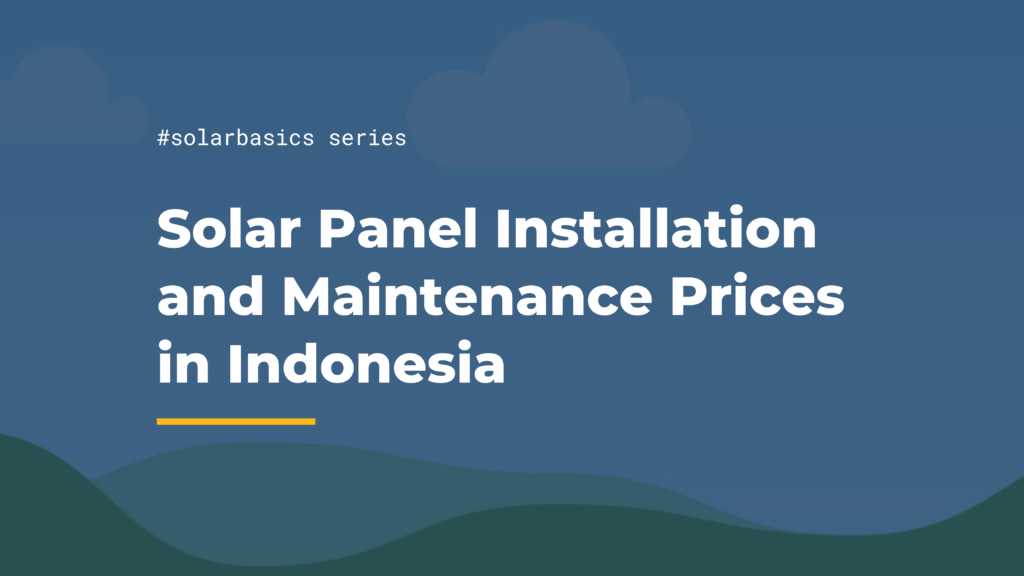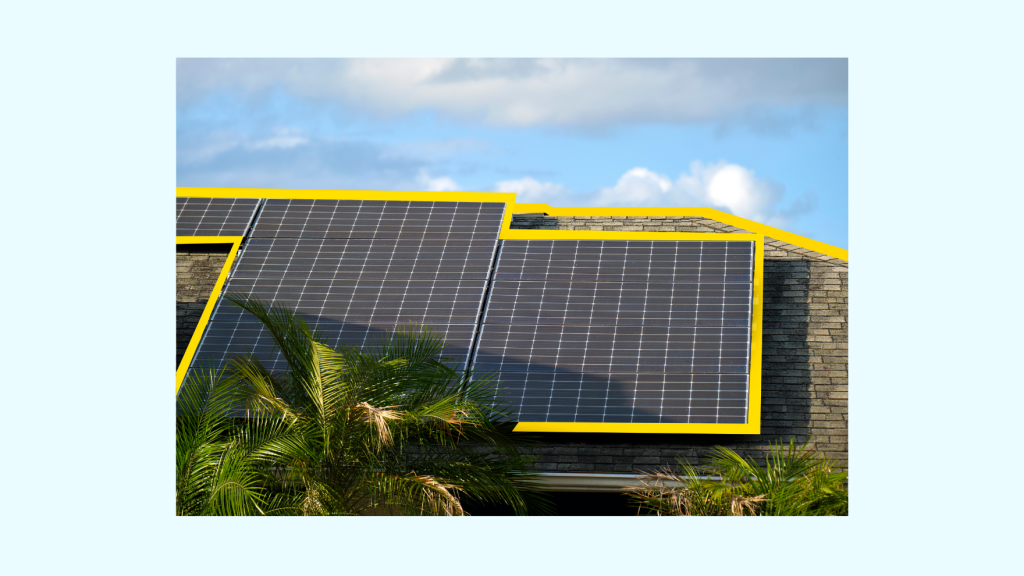Going solar has endless benefits, from the use of renewable energy to reduce carbon emissions to saving expenses on utility bills. Thinking about installing solar panels for your home? The price can vary from roof to roof, depending on the size, type of panel used and packages from different solar installers. Not to worry, we’re here to help you figure out how much your solar panel installation may cost so you can get a better solar deal.
This article was first published on 12 April 2022 and last updated on 26 June 2022 to include additional details. A version in Bahasa Indonesia is available here.
Table of Contents:
To start off, let’s first talk about the common factors that can affect the price of your home solar panel installation.
Factors that affect Solar Panel Price
Size of Solar Panel System
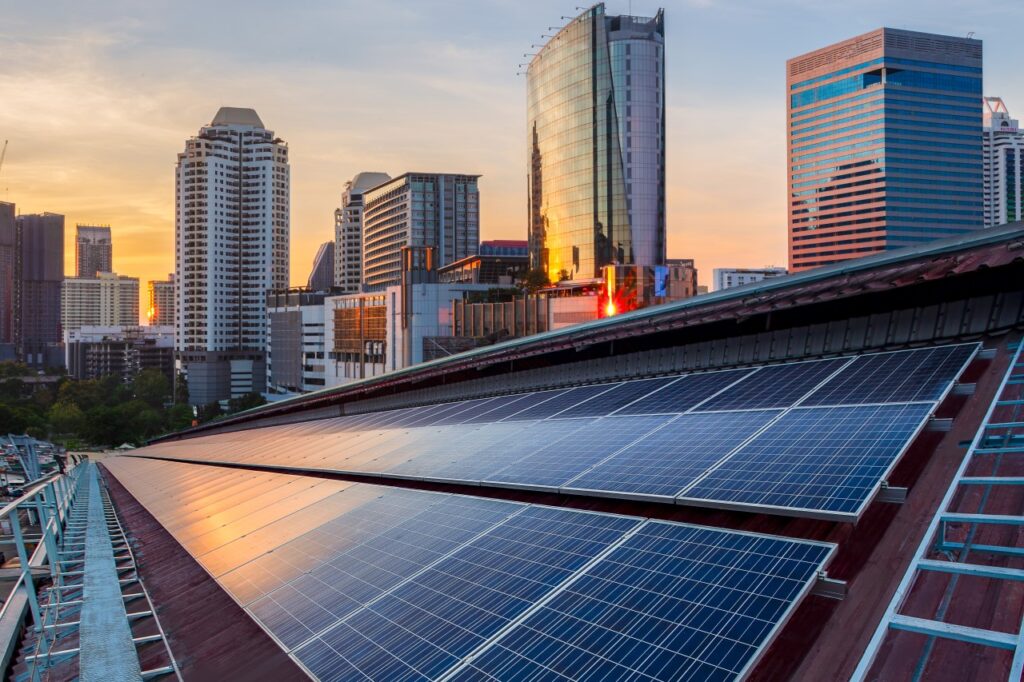
Size of your roof: The size of your rooftop solar panel system is limited by the available installation area on your roof. Aside from its fixed size, if your roof already has features such as a water tank or air conditioner, you will have less available roof area for solar panels.
A larger system will cost more in total, but the unit cost per kilowatt-peak (kWp) will be lower and more cost-effective. For instance, a 6 kWp system may cost you about Rp 15 million/kWp, but by installing a larger 20 kWp system you may be able to command a price around Rp 12 million/kWp.
Electrical connection size: It is also dependent on the maximum Volt-Amperes (VA), or maximum electrical power of your house. A higher electrical connection size can accommodate a larger inverter (what converts electricity generated by solar panels to electricity usable by your home).
In Indonesia, the maximum electrical connection size is typically ~2,2 kVA, especially for houses built by private residential developers. Most larger houses tend to upgrade their connection to ~5 kVA or even ~10 kVA, which will allow for much larger solar systems.

Your energy needs: You might also opt for a larger or smaller solar system based on the amount of electricity you want to generate. Since solar panels generate electricity during the day, optimising your solar system size to meet your daytime energy needs would be another way to maximise your solar cost savings. We recommend getting an estimate of your average electricity consumption based on your electricity bills from at least the past 3 months to calculate this.
Note: Did you know solar owners can sell excess solar electricity generated back to PLN to make a profit? However, it’s best to check if solar net metering is approved at your district level, so you can choose whether to maximise your roof space by installing more solar panels or not.
On-Grid, Hybrid or Off-Grid Solar
There are 3 types of solar panel systems:
| Type of System | Include Battery | Connected to PLN | Price |
| On-Grid | No | Yes | Most affordable |
| Hybrid | Yes | Yes | 2x grid-tiered cost for same system size |
| Off-grid | Yes | No | 2-3x grid-tiered cost for same system size |
- On-Grid: doesn’t include a battery, your home will draw on the grid for electricity when your system is not generating electricity (at night or on very cloudy days) and sell any excess electricity generated back to the grid
- Hybrid: includes a battery to store excess electricity generated by your system, your home will draw on the grid for electricity when your battery runs out
- Off-grid: includes a battery, your solar system is not connected to the national electrical grid
In more remote regions outside Jakarta or where electricity supply is less reliable, installing solar with battery storage to protect your home from power outages is an appealing idea. However, such systemsare much more expensive as you’ll also have to factor in the cost of the solar batteries. As such, most homeowners tend to opt for on-grid solar systems.
Roof Pitch, Type and Accessibility
Solar panels can be installed on almost all roofs. That said, your roof’s material and type determine if additional materials for installation (such as racking and mounting systems) are needed — which will add to your installation cost. In Indonesia, most roofs are pitched and tiled, though a small proportion use metal sheet or flat concrete. Here’s a quick preview of solar installations of the various types of roofs and which is the most ideal for a solar setup.
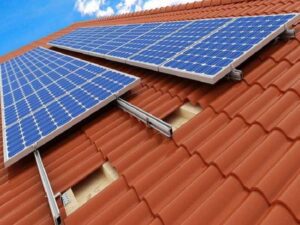
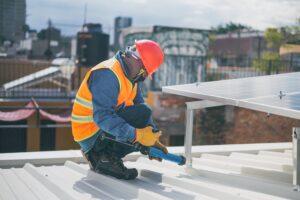
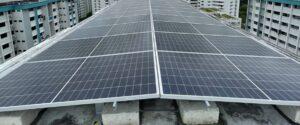
Tiled roofing: Tiles are usually first removed individually for mounting frames to be installed before they are returned to their original position.Drilling is usually necessary to ensure that the mounting frame is properly secured. Installers then fix your solar panels onto the mounting frame. More work is required in a solar panel installation on a tiled roof and this can add to costs.
Metal roofing: Two main types of metal roofs are used in Indonesia – trapezoidal metal, and ‘sand tile’ metal. For ‘sand tile’ metal, the installation process is similar to tiled roofing with drilling and mountings. On the other hand, trapezoidal metal roofs are cheaper to install solar on, as mounting clips are easy to fasten to the raised roof sheets without the need for drilling or penetration. This simple installation process helps to reduce costs and also eliminate any risks of water leakage. You can also easily remove your solar panels from your roof should you need to do so.
Concrete roofing: Solar installation on concrete roofs are slightly more expensive than on traditional tile roofs in Indonesia. Installers secure mounting racks for solar panels by weighing them down with concrete ballasts on the roof, rather than through drilling or penetration. As concrete roofs are often flat,tilted mounting racks are installed for solar panels to be “self-cleaning” when it rains.
Note: The percentage difference in total cost compared across the three roof materials is less than 5%. Other factors such as system size and whether you opt for battery storage affect the total cost far more significantly.
Along with roof type, roofs without easy accessibility (with a ladder or via a balcony) may also require additional scaffolding. Steep roofs also involve additional risk, often requiring higher labour costs and increasing your solar panel installation price.
Type of Solar Panel
Two main factors determine the price of solar panels — their technology and the brand. There are 3 main types of solar panels: Monocrystalline, Polycrystalline and Thin Film. While each has its pros and cons,residential rooftop solar installations use monocrystalline solar panels most frequently because they are the most space-efficient and have the highest efficiency.
Most solar installers in Indonesia usually recommend panels made by “Tier 1” solar panel manufacturers. TheBloomberg New Energy Finance uses this tiering system as a measure of a manufacturer’s reliability and consistency. The prices of “Tier 1” solar panels vary based on where they are manufactured, their efficiency and warranty durations. The most popular solar panel brands in Indonesia are typically the more affordable top Chinese manufactured panels in the list such as LONGi, Jinko, Trina, JA Solar, etc.
Overall Solar Panel Price Estimates
Here’s a rough estimate of the standard system cost for landed homes in Indonesia. Remember that installation costs will also vary depending on the above factors.
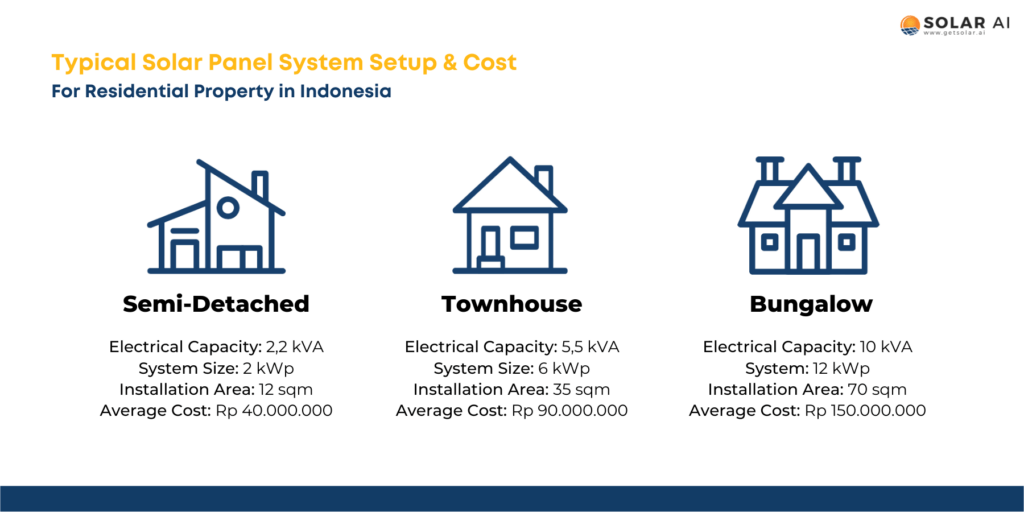
So, how much does it cost to install solar panels in Indonesia? The cost depends on your panel type, roof type and size of your solar system. Overall, the price of installing grid-tiered solar systems can range from 40 million IDR for small houses, 90 mil. IDR for medium sized townhouses to 150 mil. IDR or more for larger bungalows.
Other Solar Panel Costs in Indonesia
Maintenance Fees
Most solar panels come with a 12-year product warranty and 25-year power output warranty. Meanwhile, solar inverters usually have a 5-year product warranty. These warranties generally cover 1-for-1 replacements of defective equipment. Some solar installers provide a contract or package with maintenance fees covered for the first 1-2 years (often referred to as a Defects Liability Period or DLP). However, installers do not usually provide free lifetime solar maintenance since most solar PV systems last for 25 to 30 years. This means that if your solar panels require maintenance within the warranty period, while the replacement panels will be provided for free, you may still have to pay your installer for the labour costs associated with the replacement work.
We encourage solar homeowners to schedule an annual maintenance visit for your solar system, similar to air-conditioners. Your installers can both clean your solar panels and conduct tests on your inverters and breakers. Maintenance costs for your solar panel system usually range from 700k to 1 mil. IDR per visit in Indonesia.
Bonus Tip: Almost all solar panel systems these days come with a free online monitoring platform or mobile app that you and your installer can use to track the performance and efficiency of your solar PV system. Monitoring your system regularly and solving issues promptly when they come up will reduce the chances of long-term damage to your solar panels. This can cut down unnecessary large expenditures in the future.
Not afraid to get your hands dirty and want to learn how to clean your solar panels at home? Check out our article on solar panel cleaning and maintenance here.
Waterproofing or Reroofing
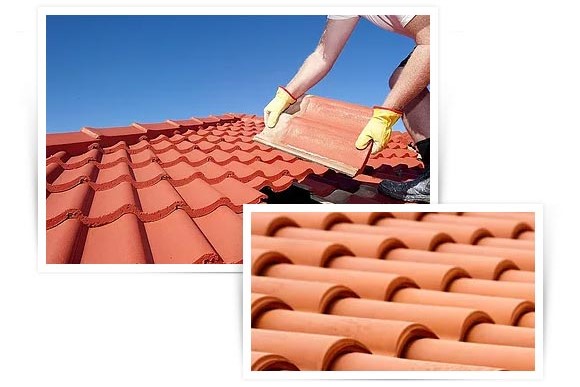
Water intrusion is a risk that may occur after installing your solar PV system. As a caveat, when installing solar panels requires drilling, installers usually seal spaces on the roof with flashings to prevent leakages. Certain roof installations such as metal standing seam are also largely non-intrusive.
In fact, a unique preference of some Indonesian homeowners is to avoid installing the solar panels directly on the roof, fearing that solar panels will cause more leakage. Hence, they spend more to build steel structures on top of their roof to install solar panels. In actual fact, roof leakage is a result of faulty roof construction or plumbing, and solar installers also take the aforementioned preventive measures against leakages. If you’re still concerned however, why not check out our video of the entire solar installation process here?
If your roof is relatively old or poorly maintained, we advise renovating or waterproofing your roof before you begin installing solar panels. After all, your solar panels are likely to sit on your roof for the next 25 to 30 years. Do note that waterproofing procedures are generally not immediately necessary and can add to your budget. However, they are a worthwhile investment to prevent even more costly damages after installation.
Make sure to take all these considerations into account when budgeting for the installation of your home solar system. For a more customised solar quote, you should reach out to solar companies directly.
Solar AI Technologies wants to thank Oktoviano Gandhi from Alva Energi and Benoît Prim from Inecosolar for their contributions to this article.
